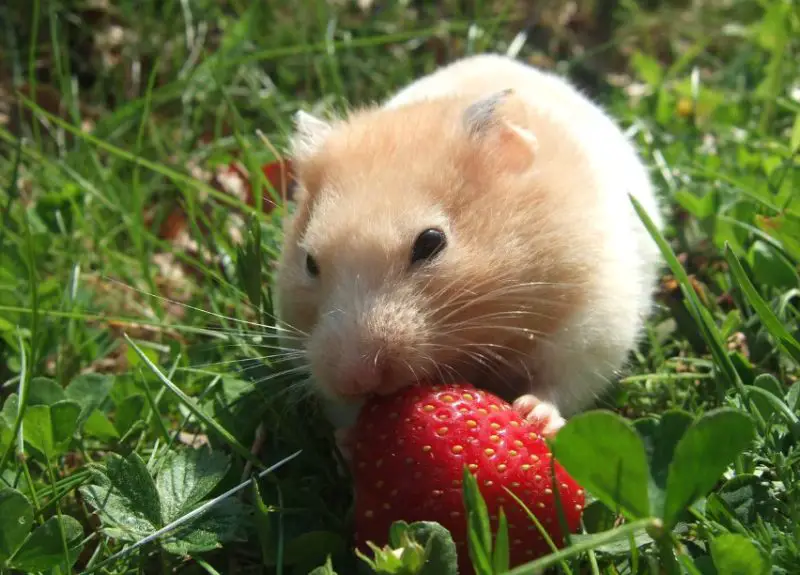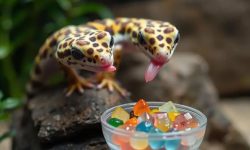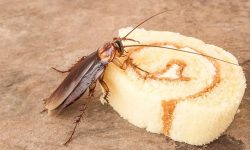Hamsters may be tiny, but their diets play a surprisingly big role in their overall health, energy and behavior. Whether they are running on their wheel at night or tucking food into those adorable cheek pouches, hamsters rely on a well-balanced diet to stay active and healthy. Understanding what hamsters eat helps owners avoid harmful foods, support proper digestion and create a diet that matches how these little rodents feed in nature.
In the wild, hamsters eat seeds, grains, grasses, roots, insects and occasional plant matter. Their natural diet is varied and nutrient-dense, allowing them to survive in harsh, dry environments. Domestic hamsters share the same biological needs. While commercial pellets provide a baseline, adding safe fresh foods keeps them healthier and more mentally stimulated. The right mix of protein, fiber, vitamins and hydration goes a long way in improving their lifespan and daily comfort.
This guide explores 20 healthy foods hamsters love most. From vegetables and fruits to protein-rich treats, these foods help owners build a safe, diverse diet that mirrors nature while avoiding unnecessary risks.
Understanding the Hamster Diet
Hamsters are omnivores, meaning they eat both plant and animal-based foods. Their diet should be high in fiber, moderate in protein and low in fat. Fiber keeps their digestive system moving, while protein supports muscle growth and healthy coat development. Because hamsters have small stomachs but fast metabolisms, they benefit from nibbling small amounts of nutrient-dense foods throughout the day.
In the wild, hamsters forage constantly. They gather seeds, dig up roots, chew grasses and occasionally eat insects when available. These foods provide slow-burning energy that suits their active nighttime habits. Domestic hamsters retain the same instincts—they hide food, hoard it in their bedding and snack through the night. Providing foods similar to their natural diet keeps them satisfied and reduces stress-related behaviors.
Fresh foods should complement—not replace—commercial pellets. Pellets ensure hamsters receive balanced nutrients, while fresh vegetables, fruits and proteins provide additional vitamins and enrichment. Understanding the mix helps owners support long-term health without overwhelming their pets with too much sugar, fat or moisture.
20 Healthy Foods Hamsters Love Most

1. Carrots
Carrots are a favorite among hamsters because they’re crunchy, sweet and full of nutrients. Their firm texture helps trim a hamster’s teeth, which grow continuously throughout life. Carrots also provide natural fiber that supports healthy digestion.
In moderation, carrots offer vitamin A and antioxidants that promote good vision and overall wellness. Hamsters enjoy chewing on small carrot slices, especially during active nighttime hours. Offering tiny pieces ensures they don’t store too much sugar in their pouches.
Carrots also provide hydration and enrichment, giving hamsters something engaging to chew. As long as servings are small, carrots are a healthy and enjoyable part of their diet.
2. Broccoli
Broccoli is one of the best vegetables for hamsters because it’s packed with vitamins, minerals and fiber. Just a small piece provides nutrients that support immune function and digestive health. Many hamsters enjoy nibbling on the soft florets.
Although nutritious, broccoli should be introduced slowly to avoid gas or bloating. A tiny floret a few times per week is usually enough. Broccoli stems are softer and easier on sensitive stomachs.
In nature, hamsters often chew leafy plants with similar textures. Broccoli provides a safe and easy way to mimic that natural feeding behavior.
3. Cucumber
Cucumber is refreshing and hydrating, making it great for hamsters in warm climates. Its high water content helps maintain hydration without overwhelming their digestive system. Hamsters enjoy the crisp texture.
However, because cucumbers contain mostly water, they should be offered in small amounts to prevent diarrhea. A thin slice once or twice a week is plenty. Removing seeds may help avoid stomach sensitivity.
Hamsters in the wild often chew moisture-rich plants, and cucumber serves as a safe domestic substitute when used carefully.
4. Apple (Without Seeds)
Apples are sweet, crunchy and packed with fiber—three things hamsters love. A tiny slice offers natural sugars, antioxidants and vitamins that support energy levels and immune function. Their crisp texture also helps maintain dental health.
It’s important to remove seeds completely since apple seeds contain compounds harmful to hamsters. A very small slice or thin cube is enough. Too much apple can add unnecessary sugar to their diet.
Apples mimic the seasonal fruits hamsters sometimes encounter in nature, providing variety and enrichment in small doses.
5. Blueberries
Blueberries are rich in antioxidants, making them a nutritious treat for hamsters. Their soft texture and sweet taste appeal to many pets, especially dwarf hamsters. A single blueberry can be a perfect serving size.
Because blueberries are high in natural sugar, they should be fed sparingly—about once or twice a week. Their moisture also helps with hydration, but too much can upset digestion.
In the wild, hamsters rarely find berries, so blueberries should be treated as a special snack rather than a daily food.
6. Spinach
Spinach provides calcium, fiber and vitamins essential for healthy bones and muscles. Hamsters can benefit from spinach in small amounts, especially when paired with other leafy greens. It also keeps them mentally engaged through chewing and shredding.
However, spinach should be offered in moderation because it contains oxalates, which can interfere with calcium absorption if overfed. A small leaf once or twice per week is ideal.
Hamsters naturally nibble on leafy plants, and spinach is a nutrient-packed option that fits well into their feeding routine.
7. Kale
Kale is a nutrient powerhouse rich in vitamins A, C and K. Its slightly tough texture makes it an engaging chew for hamsters, helping maintain healthy teeth. Just a small piece provides valuable greens in their diet.
Though healthy, kale should be fed sparingly due to its strong calcium content. Too much can stress a hamster’s kidneys over time. Offering a pea-sized portion is usually enough.
Hamsters enjoy leafy vegetation in nature, and kale is a safe domestic equivalent when used responsibly.
8. Peas
Peas are small, soft and packed with nutrients—perfect for a hamster’s tiny paws. Their natural sweetness makes them appealing, and their protein and fiber levels support balanced nutrition.
Fresh or frozen peas (thawed) are safest. Canned peas should be avoided because of added salt. Peas should be fed in single-piece portions to avoid digestive issues.
Their small size and natural flavor make peas an easy, occasional treat that hamsters quickly accept.
9. Sweet Potato (Cooked)
Cooked sweet potato offers fiber, vitamin A and natural carbohydrates that support long-lasting energy. Its soft texture makes it easy for hamsters to nibble without risk.
Raw sweet potato isn’t suitable for hamsters because it’s difficult to digest. Cooked, unseasoned pieces served in tiny cubes work best. Only small amounts should be offered due to natural sugars.
Sweet potato mimics root-like foods hamsters dig up in nature, making it both nutritious and instinct-friendly.
10. Bell Pepper
Bell peppers are rich in vitamins and hydration. Their sweet flavor appeals to many hamsters, and their crisp texture provides satisfying chewing. A small piece of red, green or yellow bell pepper works well.
Pepper seeds should be removed to prevent choking. The vegetable is low in fat and sugar, making it a great regular addition to their rotation of fresh foods.
Bell peppers resemble wild plant matter hamsters often seek, adding variety while supporting immune health.
11. Pumpkin Seeds (Plain)
Pumpkin seeds are a natural, healthy snack full of protein and beneficial fats. They’re crunchy, flavorful and easy for hamsters to hold. Seeds help maintain dental health because of their firm texture.
Only plain, unsalted, unroasted seeds should be used. Roasted or salted seeds can harm hamsters. One or two seeds at a time is plenty because of their high fat content.
Hamsters in nature store seeds for winter, and pumpkin seeds mirror this behavior while supplying balanced nutrition.
12. Sunflower Seeds (In Moderation)
Sunflower seeds are a classic hamster food because of their taste and energy-rich nutrients. Hamsters love cracking the shells, which adds mental stimulation. Seeds provide protein, fiber and healthy oils.
But sunflower seeds are calorie-dense, so moderation is essential. Too many can lead to weight gain or nutrient imbalance. A few seeds per week is ideal.
In the wild, hamsters collect fatty seeds to build energy reserves, so limited sunflower seeds make a natural, satisfying treat.
13. Oats
Plain oats are an excellent source of fiber and gentle carbohydrates. They support steady digestion and provide long-lasting energy. Hamsters enjoy both rolled oats and steel-cut varieties in small amounts.
Oats should be served dry and plain—not cooked. They’re easy to sprinkle over pellets or offer as hand-fed treats. Their mild flavor makes them suitable for sensitive stomachs.
Wild hamsters forage grains regularly, and oats provide a domestically safe version of those natural foods.
14. Cooked Brown Rice
Cooked brown rice offers fiber and gentle carbohydrates that support digestion. Its soft texture is easy for hamsters to handle, and its mild taste works well for picky eaters.
Rice should always be cooked plain and served in tiny portions. Overfeeding can cause bloating due to starch content. A pinch is enough.
Hamsters in nature nibble on various grains, and brown rice mimics those natural sources without overwhelming their digestive system.
15. Chicken (Plain, Cooked)
Hamsters are omnivores, and a tiny bit of plain cooked chicken provides essential protein. It supports muscle growth, coat condition and overall vitality. Some hamsters enjoy soft shreds of chicken as a rare treat.
Chicken must be completely unseasoned—no salt, garlic or spices. Only a fingertip-sized piece should be offered, no more than once a week.
This protein source resembles the occasional insects or carcass scraps hamsters might eat in the wild.
16. Boiled Egg
Boiled egg is another excellent protein option. The soft texture is ideal for hamsters recovering from illness or needing extra nourishment. Both egg white and yolk are safe in tiny amounts.
A crumb-sized portion is enough. Overfeeding can cause digestive issues due to fat content. Eggs should be free of seasoning or oils.
Eggs provide vitamins and minerals that help support immune function and growth.
17. Mealworms
Mealworms offer natural animal protein similar to wild insects. Their crunchy exoskeleton appeals to hamsters and satisfies natural chewing instincts. They’re especially useful during growth stages.
Dried or live mealworms are both acceptable, though live worms provide extra enrichment. Only one or two mealworms at a time are necessary.
In nature, hamsters opportunistically eat insects for protein, making mealworms a fitting addition.
18. Berries (Strawberries, Raspberries)
Berries provide antioxidants, vitamins and natural hydration. Their soft flesh makes them easy for hamsters to enjoy without much chewing effort. A tiny piece of berry can be a refreshing, flavorful treat.
Because berries are high in sugar, servings must be very small—about the size of a fingernail. Overfeeding may upset digestion.
Wild hamsters rarely encounter berries, so these should be occasional treats rather than dietary staples.
19. Pear (Small Pieces)
Pears offer gentle sweetness and hydration, plus fiber that supports digestive comfort. Hamsters enjoy their soft texture and mild flavor.
Seeds and core must be removed, and servings should be tiny. Pears contain natural sugars that should be limited to prevent weight gain.
Their juicy flesh makes pear pieces especially appealing during warmer months.
20. Romaine Lettuce
Romaine lettuce is a safer leafy option compared to iceberg lettuce, which contains mostly water and fewer nutrients. Romaine offers vitamins and fiber that support digestion.
Small pieces should be provided to avoid watery stools. Mixing romaine with other greens adds variety while preventing overconsumption.
Hamsters naturally graze on leafy plants, and romaine provides a mild, safe way to mimic that instinct.
FAQs About What Do Hamsters Eat
What do hamsters eat most often?
They mostly eat pellets, seeds and small amounts of fresh vegetables.
Can hamsters eat fruit?
Yes, but only in tiny amounts because fruit contains sugar.
Do hamsters need protein?
Yes. They benefit from small portions of mealworms, eggs or plain chicken.
Can hamsters eat cheese?
Only in very tiny amounts, and infrequently. Too much fat is harmful.
What vegetables are safest?
Carrots, broccoli, cucumbers, romaine, peas and kale in moderation.
Do hamsters hoard food?
Yes. It’s natural for them to store food in their bedding.
Can hamsters drink milk?
No. They are lactose intolerant.
How often should hamsters eat fresh food?
A few times per week, depending on the food.
Can hamsters eat bread?
Plain bread is safe in tiny quantities, but not nutritious.
What foods are toxic to hamsters?
Garlic, onions, chocolate, grapes, raw beans and anything seasoned.
Final Thoughts
Hamsters thrive when given a balanced mix of pellets, vegetables, fruits and occasional proteins that mirror their wild diet. Knowing what hamsters eat helps owners provide safe, nutritious foods that support energy, digestion and long-term health. With thoughtful feeding and small portions, your hamster can enjoy a delicious, diverse menu that keeps them active, curious and happy every day.






